An impressive and elegant drawing of A3 or A4 format without a certain design and a good frame will look out of place and boring. In this regard, most specialists, upon completion of the creation of a work of art, think about how to unusually decorate their own work.
The painting can be given to a framing workshop, but this option is quite expensive and not suitable for everyone. Therefore, the best option would be to make the passe-partout yourself.
Purpose of the passe-partout
Passe-partout is presented in the form of paper of different levels of density and shade, which is used for decorating photographs, images, drawings and various works of art in A3 and A4 format. It is placed in the middle of the image and frame.
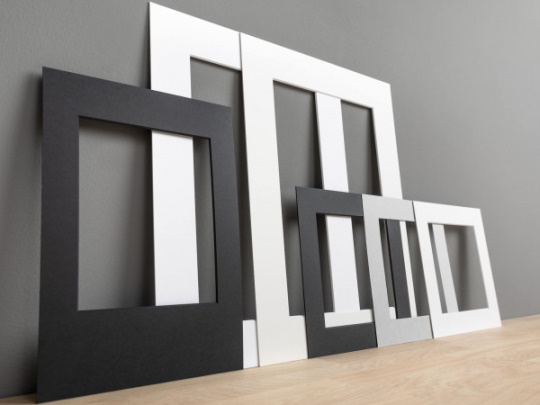
A print is made to enhance visual perception, to emphasize the image, giving it a special accent. If the drawing is placed under glass, the passe-partout should be located directly under it. The selection of thick paper must necessarily match the color scheme of the frame and the painting.
Pastel or neutral tones are often used. There are also several creative ideas that can be used to create a variety of color solutions. Due to this, embroidery can be used in decorative printmaking.
A product made of thick paper sheet can place an image on the wall if the shade of the picture and the wallpaper are identical. For example, if the room has bright light green wallpaper, you can hang a picture or a photograph of a forest in green tones.

In this case, a print with a contrasting color scheme will be the best solution. When creating a passe-partout yourself, you are allowed to leave as much free space near the drawing as needed. This will allow you to put the greatest emphasis on the artistic work.
A quote or the author's signature can be applied to the free area. The advantage of the print is its versatility, because it harmonizes perfectly with photographs and paintings of absolutely any parameters.
A frame made from a thick sheet of paper is made for the following reasons:
- focus close attention on certain details of the drawing to enhance the effect on the viewer;
- protect the painting from the harmful effects of the external environment;
- to simplify the perception of the artwork by separating it from the rest of the decor.
Basically, ready-made passe-partouts are characterized by identical parameters on each side. Due to this, it is used for the album and book direction. But in terms of aesthetics, such dimensions will not always be appropriate.
When viewing objects with a vertical position, the bottom of the print frame should have more mass. If the paper product is slightly larger in the lower area, the whole work will look much better.
Symmetrical passe-partout is combined with those paintings that have a rich accent in the lower area. Due to this, there is no need to perform additional reinforcement. Also, symmetrical print is suitable for scientific and educational works.
What are they?
The passe-partout can be simple and made from a piece of cardboard with an oval or rectangle cut out inside.
It is also possible to make a multi-window product, when several drawings are installed in one main frame, or a composite one using several shades of material. The frame can be deep and consist of 3 or 4 layers of cardboard sheet.
There are several types of passe-partout:
| View | What is it made of? |
| Standard | Use a thick cardboard sheet with different textures and colors. The thickness of the material should be approximately 2 mm. The color of the cut can be any. It goes well with any art work. |
| Deep | The thickness of the cardboard sheet should be about 5 mm. The cutting angle is made at an angle of 45 °. This type of passe-partout is used in the design of art works to create a "tunnel effect", giving the drawing depth. |
| Museum | For production, a special sheet of cardboard is used, which is impregnated with special substances that can protect a very old drawing from the oxidizing effects of the environment. Suitable for decorating rare photographs and drawings that have antique value. |
| Fabric | Any fabric material is used to decorate the paper base of the frame: from burlap to velvet, depending on the idea of the artwork. It is used to decorate paintings of a pictorial nature, such as a herbarium under glass or a panel. |
Determination of sizes
You can make a passe-partout for an A3 drawing with different field sizes. However, the range is generally from 3 to 10 cm. The size of 5 cm is considered the standard of the golden section. Therefore, it is in high demand among professionals.
To make a passe-partout you definitely need a thick material.l, which should not become covered with wave bends from humidity or warp. To create a white edge, it is necessary to make an internal bevel relative to the work.
It is quite difficult to make such a print from a thick cardboard sheet with a bevel. Therefore, you can use a special cutting tool.
When calculating the print parameters for an A3 painting, it is necessary to take into account the frame dimensions. The A3 format is characterized by dimensions of 420 x 297 mm. A frame with standard parameters will be 450 x 350 mm.
To calculate the required size, you need to calculate the difference between the width of the image and the frame. To do this, you need to subtract 420 from 450, which will give you 30 mm. Similarly, you should calculate the difference in height: subtract 297 from 350, which will give you 53 mm.

The obtained results need to be divided in half. As a result, the parameters required to create a passe-partout for the A3 format are obtained: 26.5 mm from the bottom and top, as well as 15 mm from each side. The A4 drawing is characterized by the parameter 210 x 297 mm. When creating a print, a distance of 5 cm must be observed from each side.
What tools will you need?
It is possible to make a passe-partout for an A3 drawing using the following equipment:
- regular pencil;
- glue of any type;
- ruler;
- a sheet of Whatman paper or cardboard;
- scissors;
- metal corner;
- a thick colored paper sheet of the required shade.

Additionally, you can prepare a stationery knife and a wide, flat surface on which you can cut. You can also use a wooden or plastic stand to cover the surface of the table.
To make the print more beautiful and neat, it is permissible to use a hand cutter, but this is not necessary.
Selecting paper
You can make a passe-partout for an A3 drawing from a regular colored, pastel or watercolor paper sheet, which can be purchased at a bookstore.
More experienced specialists use designer cardboard sheets with increased density, embossing and fabric imitation or with an unusual texture. For example, it is acceptable to use cardboard sheets with a mother-of-pearl sheen or metallized material.
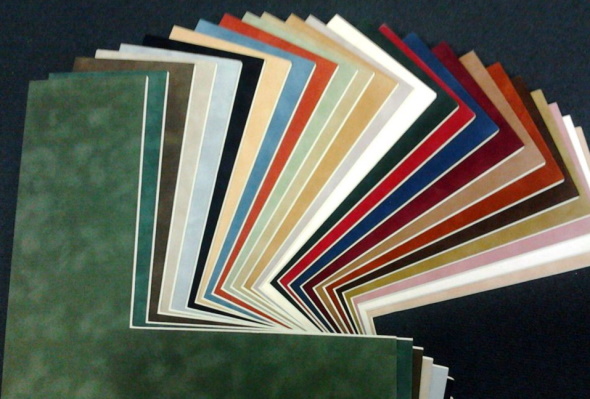
However, to create a print for A3 format, you need cardboard or a sheet of A2 paper. The material can be purchased in art stores that specialize in art.
The passe-partout can be made from a fabric material that can emphasize the velvety feel and texture. For these purposes, cheap Korean or Chinese materials with a wide range of shades are suitable.
Color selection
Before creating a mat for a drawing, you need to decide on the main shade. The color palette of the frame will affect the entire exhibition look. If you choose the wrong shade, the painting will dissolve in the frame or will look very provocative.
It is recommended to focus on more muted and calm tones: grayish, ivory, cream or light. In rare cases, you can use blue, grayish-green or burgundy color.
However, such a palette should go well with the color scheme of the picture and match the tone of one of the elements of the image. Also, the shade of the frame should match the interior where the picture will be located.
Recommendations for choosing a color palette:
- The white shade can visually enlarge the drawing, so it goes well with bright multi-colored paintings. However, this coloring slightly blurs attention from the image. It goes well with monochrome graphics and black and white photographs.
- The engravings harmonize perfectly with calm pastel colors that do not distract the eye from the artwork.
- For decorating posters, it is best to use rich, bright colors.
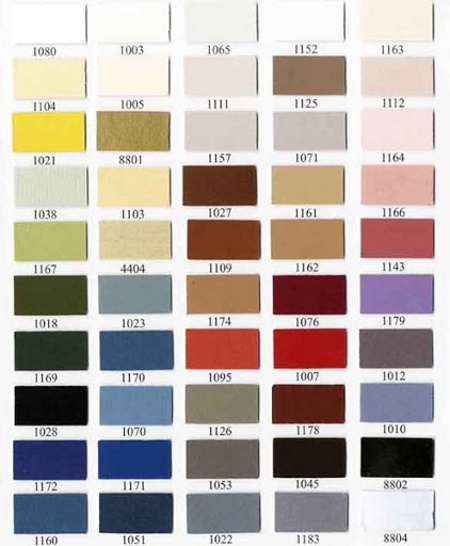
- Dark mats can focus attention on the drawing, making it more isolated and unified. However, the image must be in harmony with the color scheme.
Instructions for implementation
The passe-partout can be made in different ways and from different materials. Everything will depend on personal preferences and imagination, as well as what kind of drawing it is intended for.
Using edging
To make a passe-partout with edging, you first need to prepare the following materials:
- simple pencil;
- glue;
- a sheet of Whatman paper or thick cardboard;
- stationery knife;
- scissors;
- thick wallpaper that can be replaced with a colored sheet of paper;
- corner with a ruler.
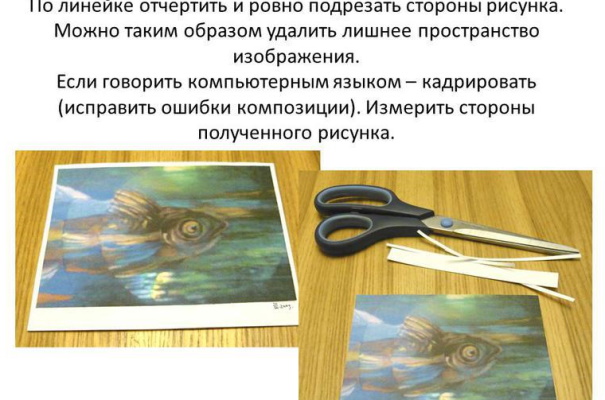

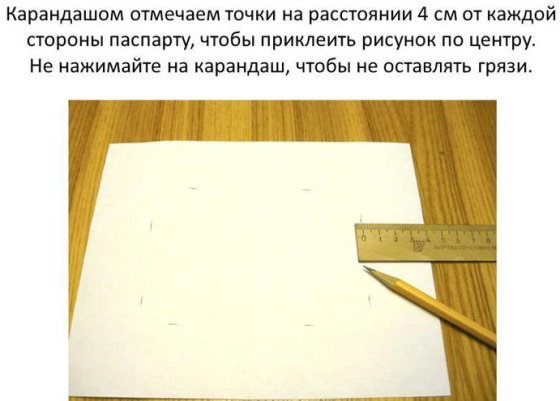

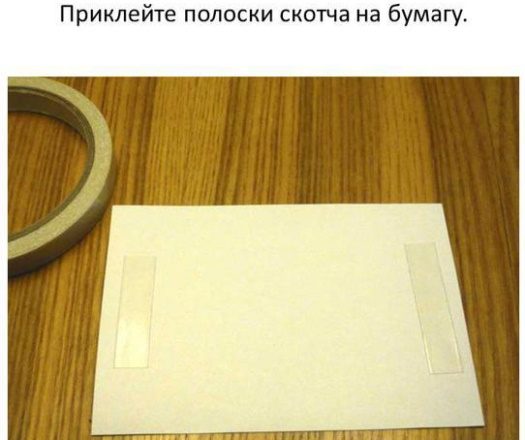

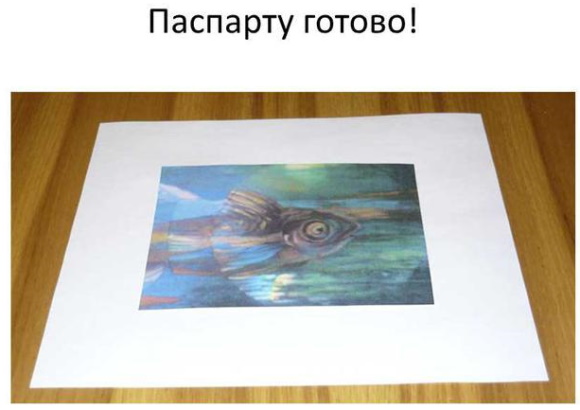
It is possible to make a passe-partout for an A3 drawing using the following step-by-step actions:
- Measure the finished image for which the print is intended. Prepare a sheet of Whatman paper, the dimensions of which should be 2 times larger than the parameters of the painting. Outline a rectangle that will match the dimensions of the finished drawing. You can outline the image.
- The distance from the edges of the cardboard sheet to the outline of the work should be the same.
- Cut out the outlined geometric shape so that the sheet of Whatman paper comes out with a window in the center.
- To make the edging from the wallpaper, cut out 4 strips, the width of which will be 4 cm. The length of 2 blanks should be identical to the length of the image, the other 2 - the width of the drawing.
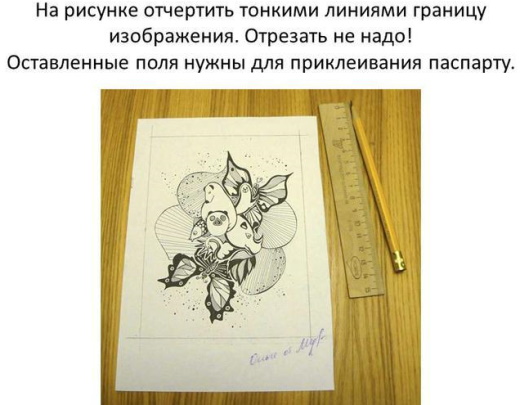
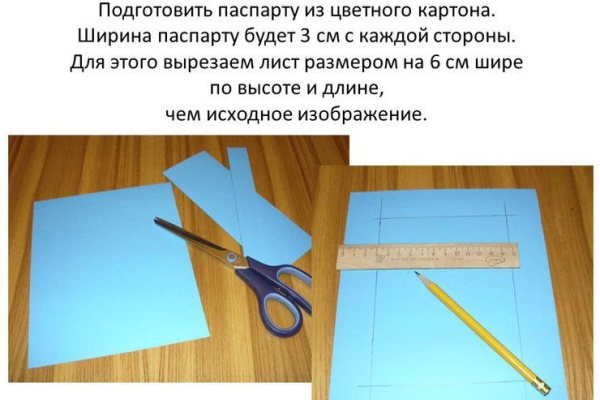

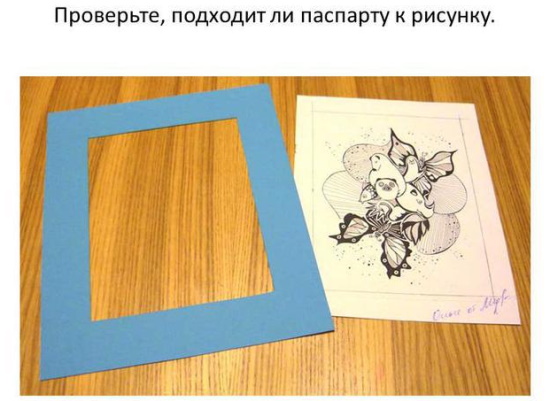
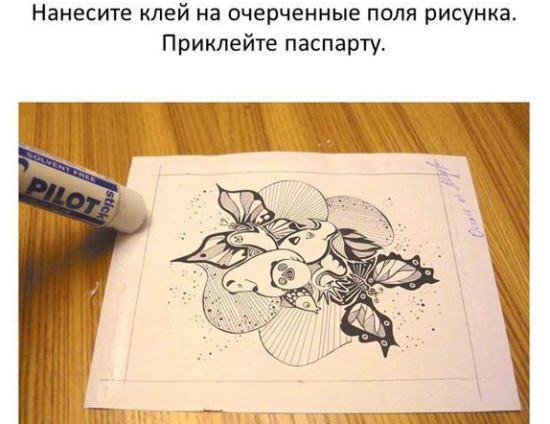
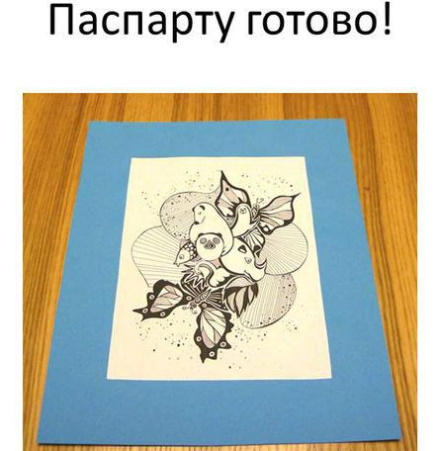
- Fold the cut strips lengthwise into 2 parts. Leave a narrow edge in the center, the width of which is 2 mm.
- Adjust the strips by placing them on the inner window of the cardboard and measuring. Trim the prepared inner corners.
- Glue the edging to a cardboard sheet. Apply glue to a thickened paper sheet, because the colored paper will be damaged due to its low density. Carefully coat the joints in the corners with glue.
- When the glue dries, turn the drawing over, adjust and fix it by inserting it into the frame.
When decorating embroidery, it must first be attached to a thick cardboard sheet. For this purpose, you can use a stationery stapler.
With a picture frame
Every frame designed for a photo or painting has a piece of cardboard that holds the picture in place on the back. If it fits very tightly to the frame, it can be used as a base for a passe-partout.
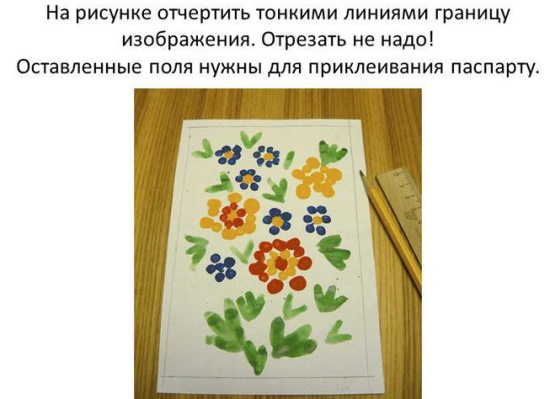
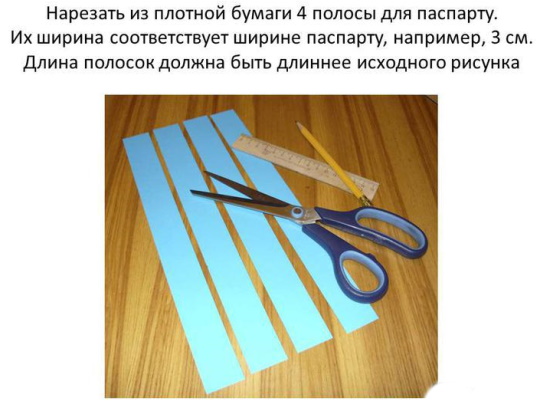
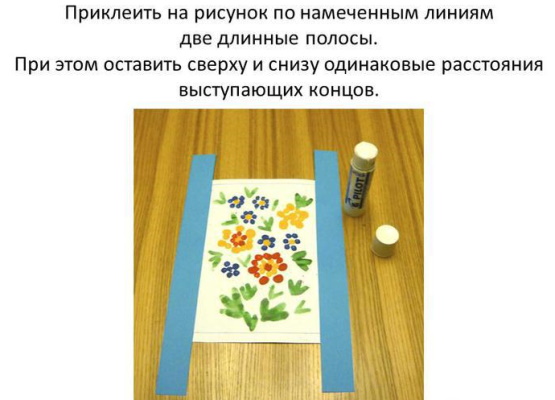
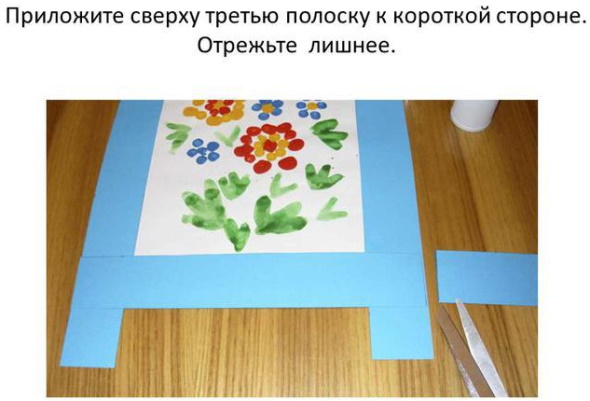
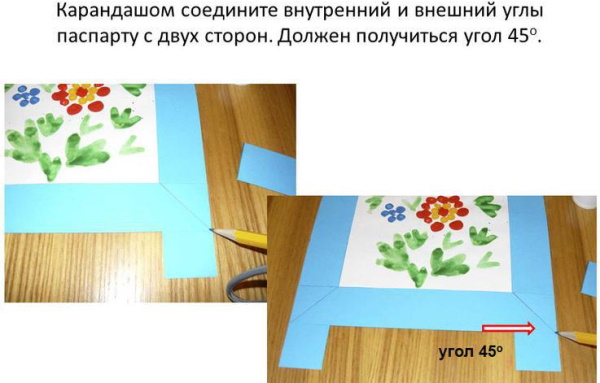
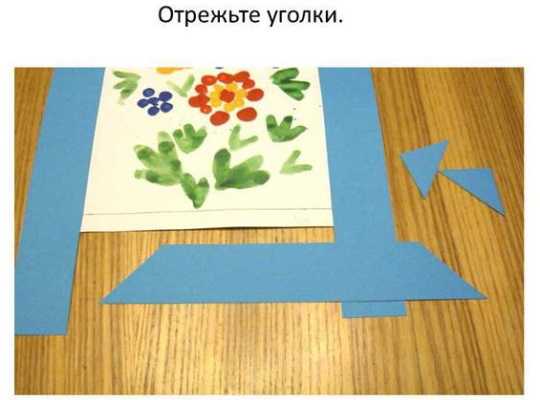
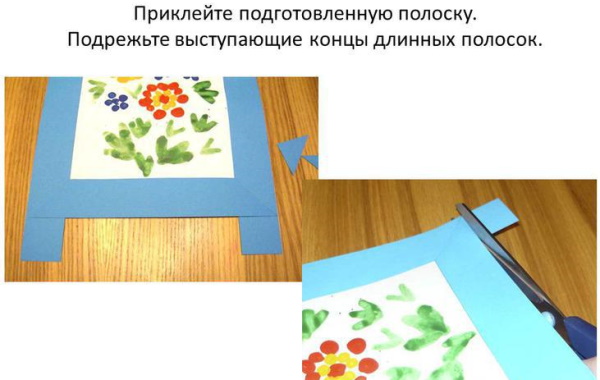

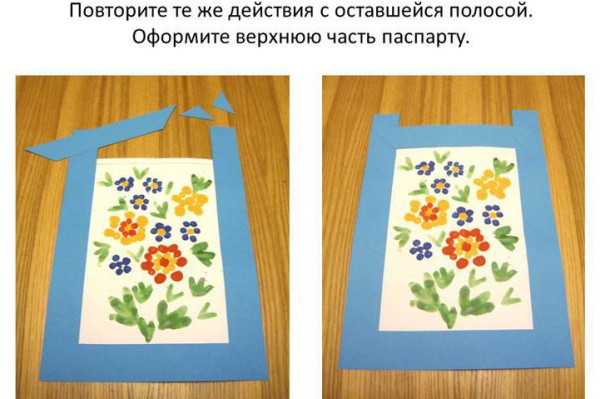
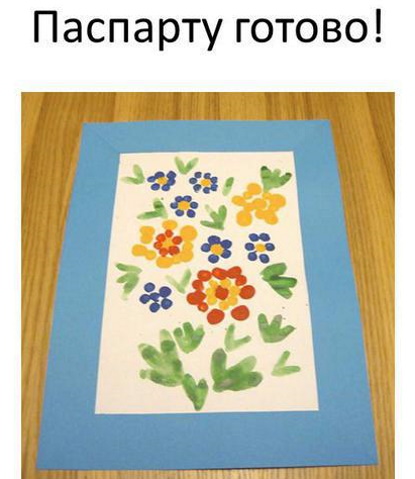
To create a print with a frame for the image, you should prepare the following tools:
- watercolor paper, wallpaper, Whatman paper or cardboard sheet;
- glue with a ruler;
- stationery knife with scissors;
- picture frame.
To create a decorative mat, it is recommended to follow the following step-by-step instructions:
- Place the cardboard on watercolor paper or a sheet of Whatman paper, trace around it and cut out a rectangle of the appropriate size.
- Find the center and measure half the size of the drawing in width and height. As a result, the image will be located in the middle.

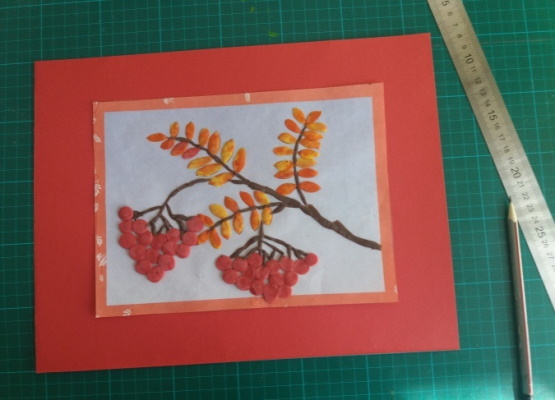
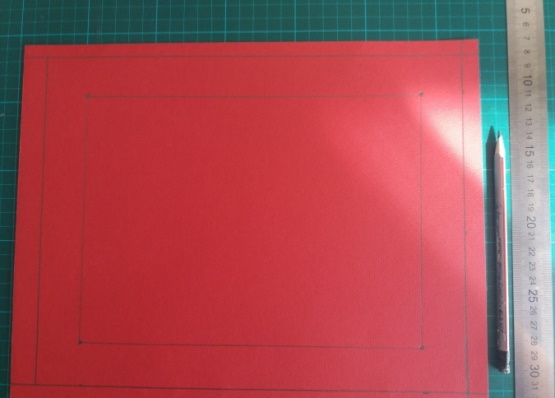
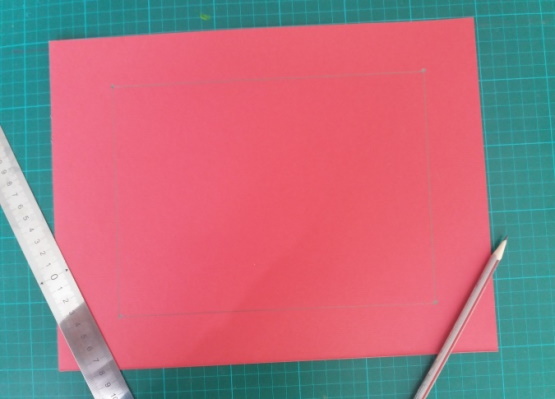
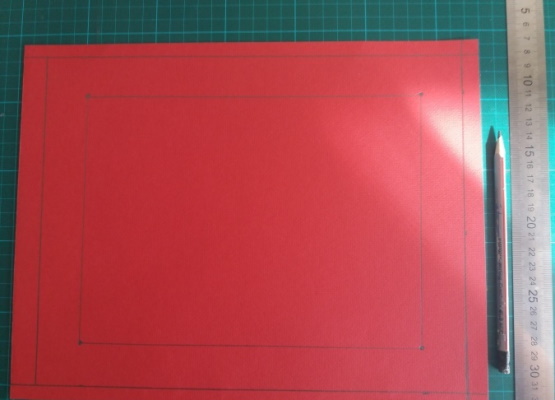

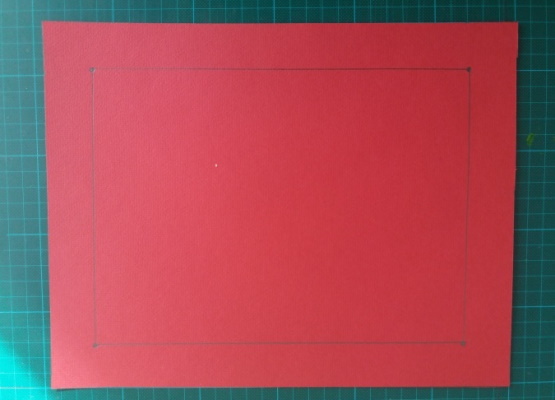
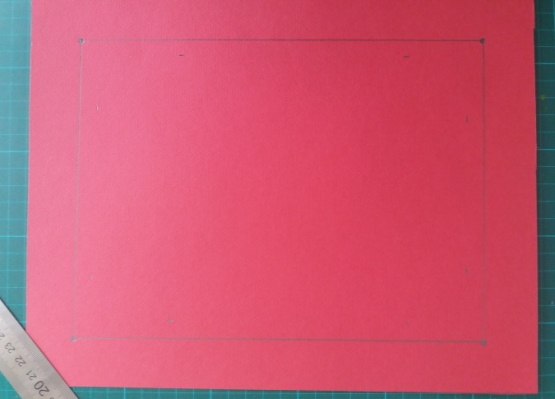

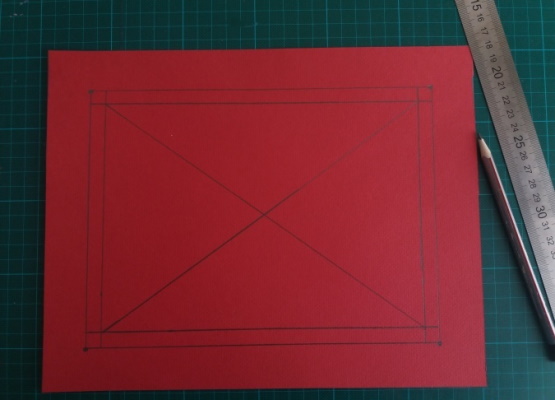
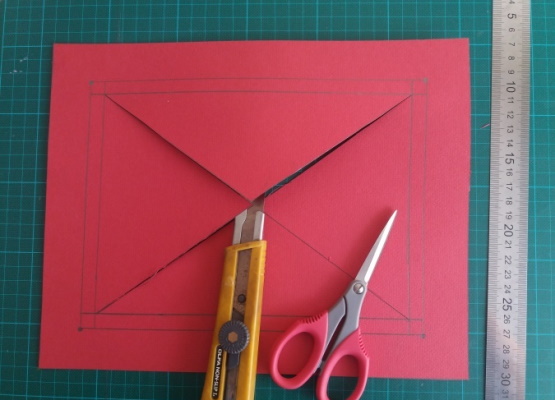
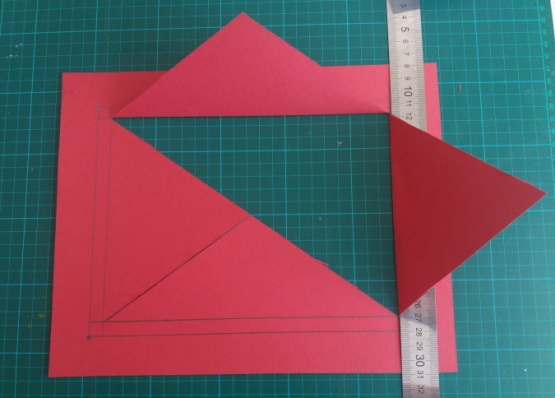
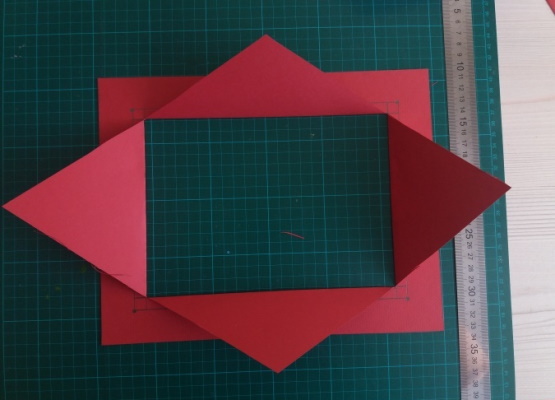
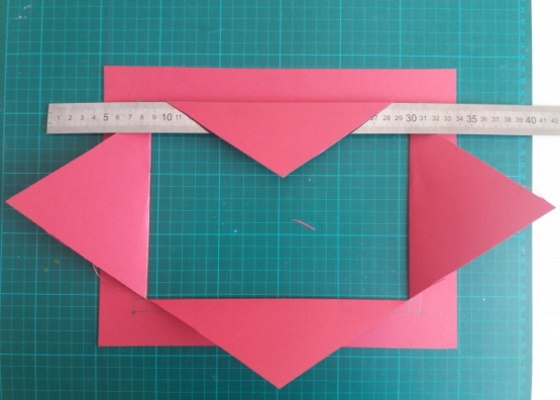
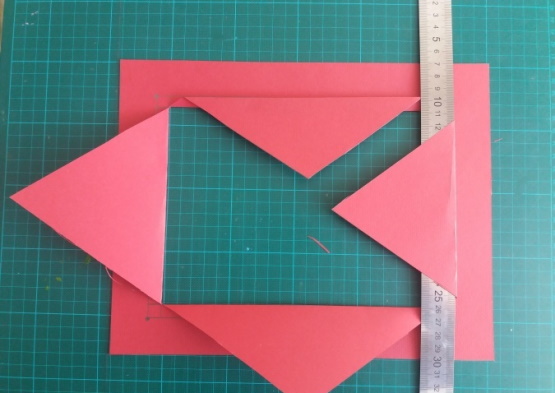


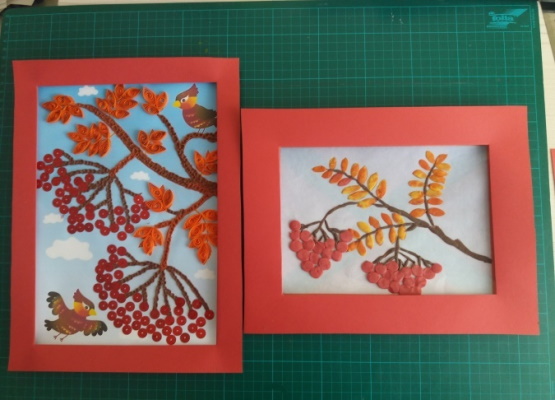
- According to the calculations, outline the frame - the cutout of the print. Step back from it inward 2 mm, drawing an additional frame.
- From the end of the cardboard sheet, calculate the smallest width of the passe-partout. From the first frame, located closer to the end, draw one additional one, the width of which will coincide with the minimum width of the print. Outline the cut lines at the corners.
- Make the depth of the print. Using a ruler and a spoon, press the print along the narrow edge outlined between the first and last frame.
- Cut off the inner section of the Whatman paper sheet with scissors.
- Make cuts along the frame corners located closer to the edge.
- Bend the resulting petals inward along the ruler, along the line located closer to the middle.
- Fix the picture to the passe-partout from the inside with a drop of glue. Put the product in a frame under glass.
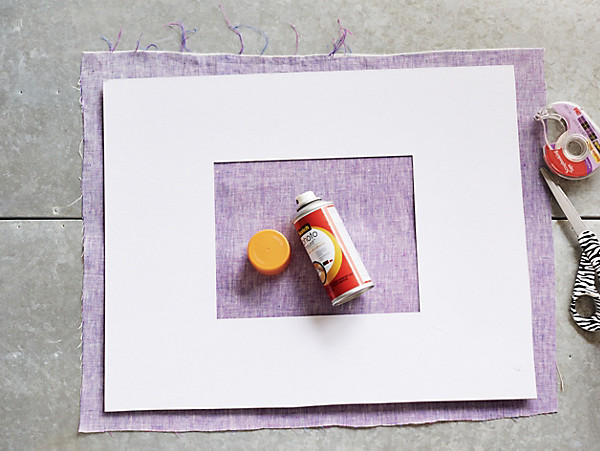

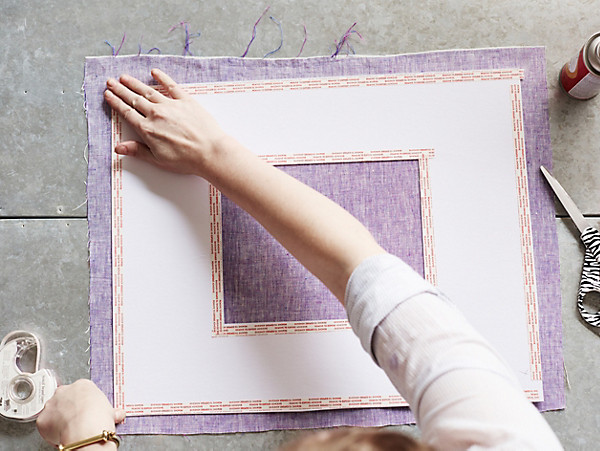
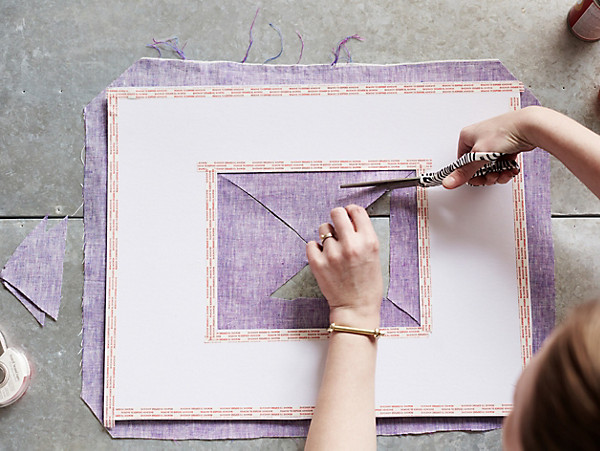
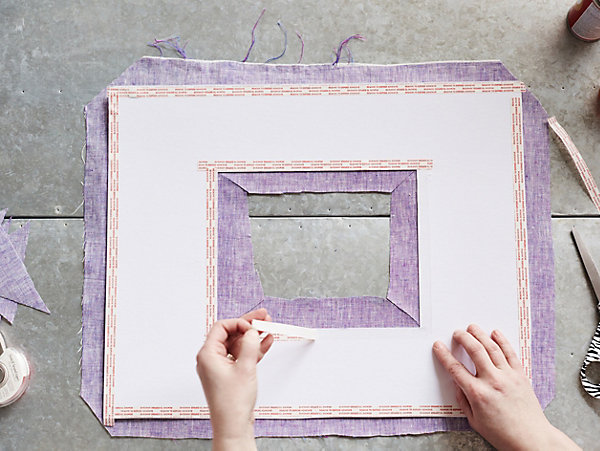
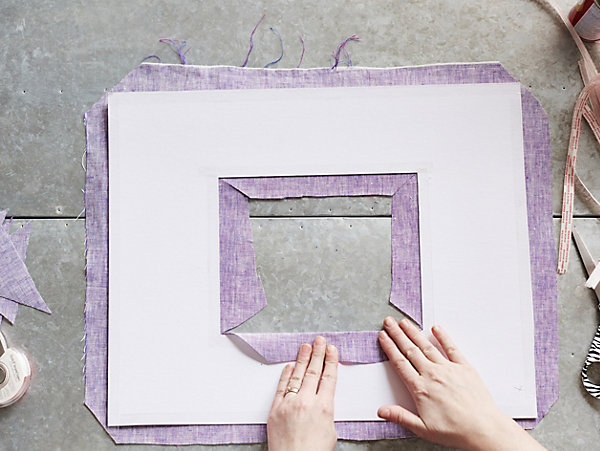
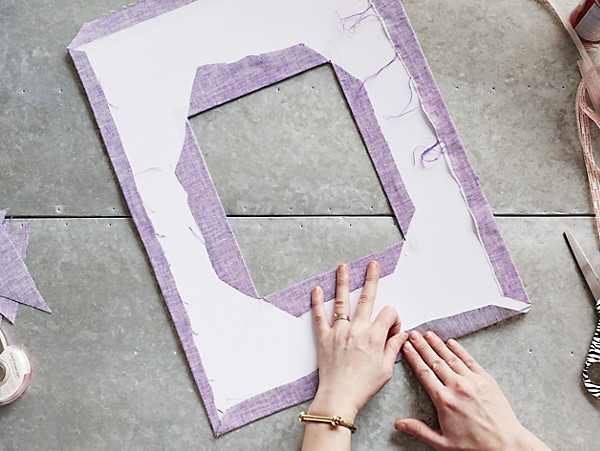
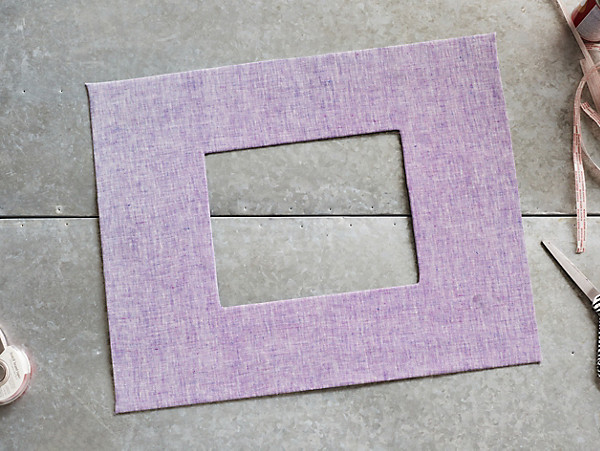
To fix the image to the print sheet, it is best to use PVA glue, since it does not leave wet marks.
Painting design
After creating the frame, you can place the painting in it:
- Place the design in the prepared corners so that the front side is at the bottom.
- The corners should hold the image with their own curves.
- To complete the design, glue all corners to the surface of the main drawing.
Tricks, life hacks
Tips for making a passe-partout:
- A large and bright drawing looks best in a wide print, while a small painting looks best in a narrow passe-partout;
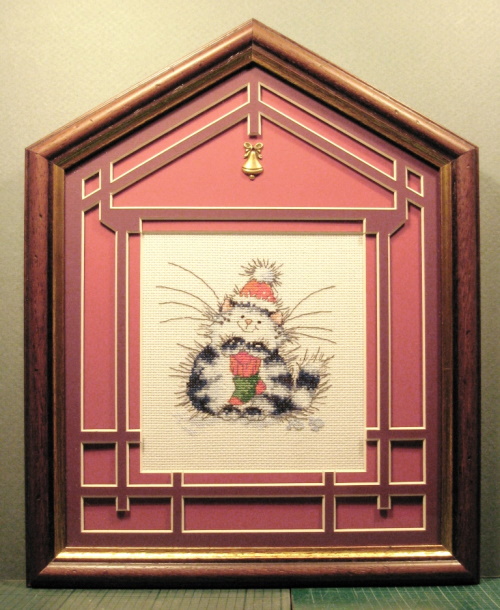
- the borders of the passe-partout must be twice as wide as the main frame;
- to give the print additional charm and romantic style, it can be decorated with ribbons, dried flowers or lace;
- to ensure normal placement of the drawing and mat in the frame, it is recommended to make them 3 mm smaller on each side than the dimensions of the main frame;
- to create a decor in the Provence style, you should first find paper that will be stylized as marble;
- You can decorate the passe-partout frame with stencil patterns, ribbons or flags, which will liven up the picture and make it lighter;
- when framing photographs or children's drawings, the passe-partout can be decorated with funny images of small toys, badges or buttons;
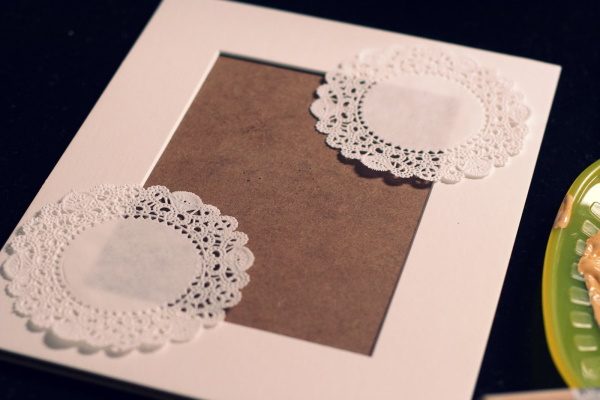
- when decorating a passe-partout, the decor must necessarily match the tonality of the painting;
- prints made from fabric material will look cozy and unusual, and can add more sophistication and refinement to a work of art;
- To make the artwork match the wall in the room, the regular sheet of Whatman paper can be replaced with the colored wallpaper that covers the room.
There are a huge number of ready-made frames and mats on sale. However, in rare cases they cannot harmoniously design a drawing of A3 and A4 format. In this regard, it is best to give preference to an individual approach, making the print yourself.
In this case, it is important to take into account the laws of perception, the characteristics of the designer interior in which the painting will be located, as well as the features of the image itself.
Video about making a passe-partout
How to make a mat for an A3 drawing:
